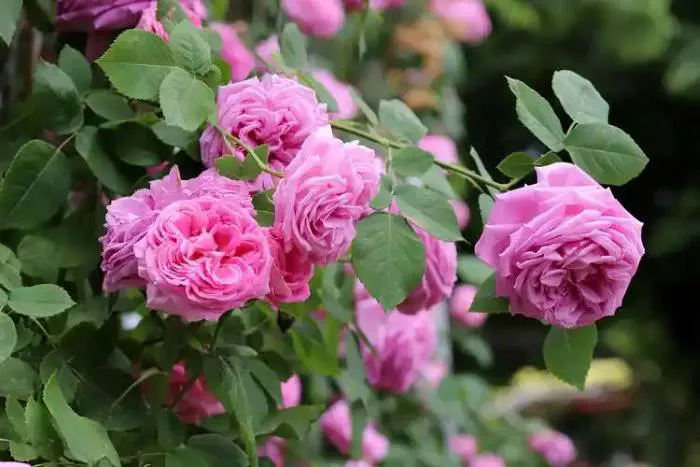Flowers have captivated human beings for centuries. They symbolize beauty, love, and nature. Among the countless varieties, one flower stands out as the most famous flower in the world. This flower is the rose. The rose is not only recognized for its beauty but also for its rich history and cultural significance. This article will explore the characteristics of roses, their historical importance, their symbolism, and their impact on culture and commerce.
Characteristics of Roses
Roses belong to the genus Rosa, which includes over 300 species and thousands of hybrids. They are known for their stunning blooms, which come in various colors, shapes, and sizes. Roses can be found in shades of red, pink, yellow, white, and even blue. Each color carries its own meaning, contributing to the rose’s popularity.
Roses are perennial plants, meaning they can live for many years. They thrive in temperate climates and prefer well-drained soil and plenty of sunlight. The flowers typically bloom in late spring and summer, although some varieties can bloom year-round in suitable conditions.
The structure of a rose is also noteworthy. A typical rose flower consists of multiple petals arranged in a circular pattern. The petals are often velvety and fragrant, attracting pollinators such as bees and butterflies. The leaves are usually dark green and serrated, providing a beautiful contrast to the vibrant blooms.
Historical Importance of Roses
The history of roses dates back thousands of years. Evidence of rose cultivation has been found in ancient civilizations, including Egypt, Greece, and China. In ancient Egypt, roses were associated with the goddess Isis and were often used in religious ceremonies. They were also used in perfumes and cosmetics.
In ancient Greece, roses were linked to love and beauty. The poet Sappho referred to roses in her works, emphasizing their connection to romantic feelings. The Greeks also believed that roses were a gift from the gods.
In Roman times, roses became even more significant. They were used in celebrations and festivals, often symbolizing luxury and indulgence. The Romans were known for their elaborate rose gardens and used roses to decorate their homes and public spaces.
During the Middle Ages, roses continued to hold cultural importance. They were used in medicine and were believed to have healing properties. The red rose became a symbol of the English monarchy during the Wars of the Roses, representing the House of Lancaster.
Symbolism of Roses
Roses are rich in symbolism, which contributes to their fame. The most well-known symbol associated with roses is love. The red rose, in particular, is a universal symbol of romantic love and passion. It is commonly given on special occasions such as Valentine’s Day and anniversaries.
Different colors of roses convey different meanings. For example, pink roses symbolize admiration and gratitude, while yellow roses represent friendship and joy. White roses are often associated with purity and innocence, making them popular in weddings. Each color adds depth to the flower’s significance, allowing people to express a wide range of emotions through their choice of rose.
Roses are also used in various cultural and religious contexts. In Christianity, the rose is associated with the Virgin Mary and is often referred to as the “Mystical Rose.” In Islam, roses are mentioned in the Quran and are seen as a symbol of paradise.
Impact on Culture and Commerce
The rose’s influence extends beyond its beauty and symbolism. It has played a significant role in art, literature, and music throughout history. Artists have depicted roses in paintings, sculptures, and photography, capturing their elegance and allure. Famous poets and writers, from William Shakespeare to Robert Burns, have referenced roses in their works, further solidifying their place in cultural history.
In modern times, roses are a major part of the floral industry. They are among the most popular flowers sold worldwide. Florists offer a wide variety of rose arrangements for various occasions, including weddings, funerals, and celebrations. The demand for roses has led to extensive cultivation in many countries, with large-scale rose farms in places like Ecuador, Colombia, and the Netherlands.
The rose industry also faces challenges, including environmental concerns and the impact of climate change. Sustainable practices are becoming increasingly important to ensure the continued availability of roses while minimizing environmental impact.
Conclusion
In conclusion, the rose is the most famous flower in the world due to its beauty, rich history, and deep symbolism. Its characteristics, such as vibrant colors and delightful fragrance, make it a favorite among flower enthusiasts. The historical significance of roses in various cultures highlights their enduring appeal.
Moreover, the symbolism of roses allows individuals to express emotions and sentiments through their choice of colors. The rose’s impact on art, literature, and commerce further cements its status as a beloved flower. As we continue to appreciate the beauty of roses, we also recognize their importance in our lives and cultures. Whether given as a gift, used in decoration, or admired in nature, roses will always hold a special place in the hearts of people around the world.


